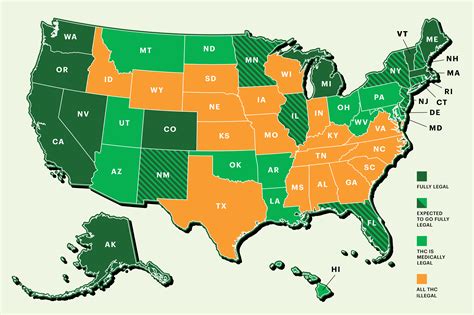The landscape of marijuana legalization in the United States presents a complex and evolving picture. With 21 states, Washington D.C., Guam, and the Northern Mariana Islands having enacted laws permitting the recreational use of marijuana as of March 1, 2023, the policy gap between federal and state jurisdictions continues to expand. Despite these state-level initiatives, at the federal level, marijuana remains classified as a Schedule I controlled substance under the Controlled Substances Act (CSA) of 1970. This classification prohibits the cultivation, distribution, and possession of marijuana, reaffirming the federal government’s stance against its legality.
The U.S. Department of Justice has recently updated its marijuana enforcement policy, reflecting a return to the rule of law and rescinding previous guidance documents. This shift indicates a firm federal stance on marijuana, notwithstanding the various state ballot initiatives that have legalized its possession and regulated its production, processing, and sale.
Marijuana is notably the most commonly used federally illegal drug in the United States, with an estimated 48.2 million people reported using it in 2019. The health implications of marijuana use are significant, with evidence suggesting potential damage to the lungs, increased risk of bronchitis, and scarring of small blood vessels.
Medical cannabis policy in the United States further complicates the landscape. While some states have legalized its use for medicinal purposes, the U.S. Food and Drug Administration holds the authority to approve drugs for medicinal use nationwide. As a result, there remains a tension between state policies and federal oversight.
Historically, cannabis use was legal in the United States during the 1800s and was commonly used for therapeutic purposes. However, the introduction of synthetic painkillers and media attention to cannabis-related violence led to the prohibition of recreational use in 1937. Access for medical use became increasingly restricted, highlighting the shifts in public policy and perception over the years.
Despite the legal advances at the state level, federal law maintains its precedence. States cannot fully legalize marijuana due to the overarching federal prohibition. All activities involving marijuana remain federal crimes under the CSA, even in states with laws legalizing medical or recreational use.
In summary, the United States continues to grapple with diverging federal and state policies regarding marijuana legalization. While states push forward with legalization measures, federal law upholds its prohibitive stance, creating an intricate policy landscape that continues to evolve.
